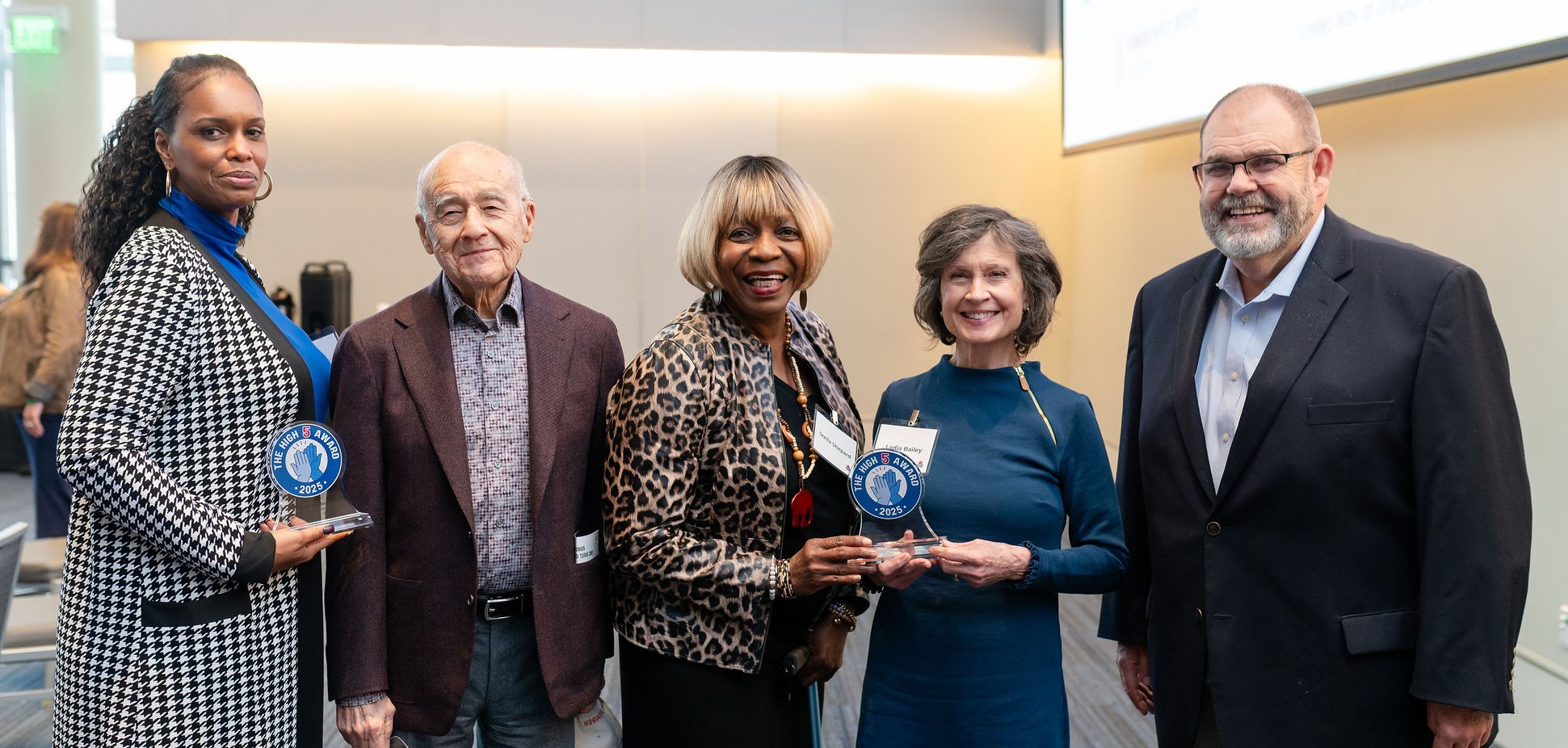By: Jami Turley, for The Center for Community Solutions
My husband was a truck driver by trade and suffered from Type 1 Diabetes for most of his adult life. In 2010, my husband underwent several surgeries to save his leg from amputation, was in the end stages of diabetic retinopathy (blindness) and kidney failure and was unable to work. Our three sons were ages 21, 18, and 11 years old at the time.
My husband applied for disability in December 2009 and was denied, due to complications not severe enough according to guidelines. He was not approved for disability until May 2011 after he suffered a hyperglycemic episode resulting in brain damage, complete blindness, and kidney failure requiring dialysis three times weekly. He passed away in October of 2012 due to complications when he was just 42 years old.
What employment & training programs really look like
During my husband’s illness and disability in 2010, I was looking for employment; we applied for assistance with ODJFS in May. We were approved for cash assistance, SNAP,and Medicaid. My husband and I both were required to attend an in-person meeting to determine work/training assignments. My husband was exempt due to medical reasons. I was assigned to the Workfirst Training Program in June 2010 which required me to attend 130 hours a month, 5 days a week, Monday-Friday from 8:30 to 2:30 at Goodwill Industries in Wooster, 15 miles from my home.
I began attending orientation on June 7th and continued until June 18th. The class curriculum was resume writing, cover letter writing, critical job skills, life skills, motivational workshops. After two weeks of attending classes, I asked my case manager at Goodwill to release me from classes to search for employment instead. We needed money, as all our bills were piling up and the classes were not useful to me. I obtained employment on my own within a week on a dairy farm two miles from my home and was released from the program. Upon obtaining employment, cash assistance was ended, and our SNAP amount allotment was reduced according to my income.
Work requirements and training did not address our greatest need
Two months later in August, my husband had complete kidney failure and required dialysis three times weekly for four hours each. He was unable to drive and required transportation to all treatments and appointments. I was his main caregiver, so this task was mostly mine. His dialysis center was 10 miles from our home, requiring a 15–20-minute drive each way, twice per day (adding up to 40 miles per day and at least one hour of time). I applied for transportation help with ODJFS and was denied. I do not remember the reason.
This program may be good for individuals who need to learn life skills, job skills, resume writing, interview training and the like. However, I did not need any of the lessons being taught in the classes I attended. Even if I needed the lessons offered, I don’t know how much they would have helped with our greatest needs. I needed money, food, and to be closer to home to take care of my husband and children.
I needed help with the caregiving of my dying husband while also taking care of our children and home.
I needed help with the caregiving of my dying husband while also taking care of our children and home, milking cows on a dairy farm five days a week and driving my husband to dialysis three days a week, as well as to other medical appointments. I was mentally exhausted and alone, with little help taking care of him. He was dying and all three of my sons and I knew it was happening. We were all living through it together, but still alone.
Chronic disease management is expensive and exhausting
In my experience, people who do not know someone close that has diabetes or have the disease themselves, do not understand anything about the disease. One common misconception is they gave it to themselves by eating too much sugar, which is not true. Type 1 Diabetes is an autoimmune disease, it can be hereditary and should be treated like a cancer diagnosis. It is a life-threatening disease from day one with many complications both physically and mentally. It is also an extremely expensive disease with little to no assistance available beyond Medicaid.
My youngest son was diagnosed with Type 1 Diabetes in April 2018 at age 19, not a year after graduating from high school. He had been employed at the same dairy farm from the time he was 15 years old in 2013 until the fall of 2017. After graduating from high school and leaving the farm, he was unsure what direction he wanted to go. He also started not feeling well around the same time due to onset of diabetes, which contributed to depression.
The first year of anyone being diagnosed with Type 1 Diabetes is extremely hard. Living with this disease is not easy, but the first year is a huge adjustment. Finding out you have a life-threatening disease that can take your life in several different ways at any time, and learning all you need to learn to keep yourself alive, is hard to handle mentally as well. Especially after losing your dad to the same disease at age 13 and living through the pain of his dad’s last two years of life.
Work requirements make life with a chronic disease unnecessarily difficult
From June 2018 until October of 2021, my son obtained employment at six different places. He worked at each job anywhere from 3 to 6 months, before obtaining his current job in October of 2021. During this time, we received SNAP benefits when he was unemployed. He was subject to SNAP work requirements in 2020 and again in 2021. Both times he was required to do a phone interview for an “assessment,” during which he was asked a series of questions and then informed where and when he was to fulfill requirements. Both times he was sent to the local Goodwill store where he stocked donations to shelves in the store. He was not given an option as to what times or dates he was required to be there.
This requirement did nothing to help him during this time. He was never offered an actual training program, which he could have benefited from. He was sanctioned once for not fulfilling his requirements and almost sanctioned a second time but obtained employment beforehand. These were some hard years for him and there was a global pandemic happening as well.
Ohio could improve the SNAP employment and training program
My own assessment of work requirements is that every person who seeks benefits has their own unique life situation that needs to be considered when assigning these requirements. The benefits are there to help people when they need help. Both my son and I were assigned to requirements that were neither helpful nor needed. If you think of both of our situations, we only needed time to figure out our next steps since the help we needed was unavailable.
Assessments need to be better catered to everyone to give the individual the best chance of succeeding and no longer needing benefits.
I think there needs to be a grace period of time from when you begin receiving benefits and when work requirements begin, at least 90 days. This would give people a chance to figure out what the next step is, like finding new employment if they just need that. Assessments need to be better catered to everyone to give the individual the best chance of succeeding and no longer needing benefits. These programs need to be designed to help people where and how they need help, not generic programs for everyone who seeks help.
I’m still left with some questions.
- When my husband was in the last months of his life and exempt from work requirements due to medical reasons, why wasn’t I—as his main caregiver—exempt as well?
- Why was I not able to get help with transportation for him?
- Why was I expected to either attend classes or obtain employment to be able to receive help while also being the main caregiver for my husband and children?
- Why was going to the local Goodwill store to stock the only option given to my son?
I hope state officials will seriously consider my perspective as they“redesign” the SNAP Employment & Training program. Ohioans facing tough times, including in rural communities like mine, deserve better opportunities to find meaningful employment and meet their basic needs.
Note
In January 2024, I detailed this experience and its effects on me and my family as part of a conversation about SNAP work and training requirements. The Ohio Department of Job and Family Services (ODJFS) hosted informational interviews with current and former participants in Ohio’s SNAP Employment and Training (E&T) Program as part of a human-centered design approach aimed at improving the program. For an overview of Ohio’s SNAP E&T Program and the 2023 legislative mandate to redesign SNAP E&T to meet the needs of employers, read CCS' report from Rachel Cahill.








